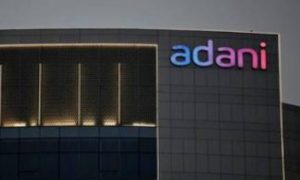The recent merger of HDFC Bank and Housing Development Finance Corporation (HDFC) is a historic event, creating a financial juggernaut with global standing. As India’s banking sector continues to evolve, more mergers are expected, further solidifying the stability and capabilities of the country’s financial institutions.
The merger of HDFC Bank and HDFC has again put the spotlight on the big mergers in the banking sector in India, which has a long and storied history in India. Banking consolidation has undeniably etched an indelible mark on the financial topography of India. The state of modern banking in India would have not been possible without the numerous mergers and amalgamations that have resulted in the creation of some of India’s biggest financial institutions.
Read More: Airtel Converts Bonds To 34,99,980 Shares On Request From FCCB Holders
The rationale behind these banking mergers stems from the ambitions to fortify financial systems, stimulate economic growth, achieve operational efficiencies, and deliver superior services to customers. As India’s banking sector continues to adapt and grow, it is likely to witness more mergers, further consolidating the stability and capabilities of the country’s financial institutions.
Let’s explore some of the big mergers and acquisitions in the banking sector that have continuously redefined India’s corporate history.
Read More: RBI Allows Credit Suisse to Keep India Banking License: Report
Historic mergers in India’s banking sector
Merger of SBI and Associate Banks: In April 2017, SBI embarked on a consolidation journey with the merger of five associate banks and Bharatiya Mahila Bank with itself. This move projected SBI into the global banking sphere’s top 50.
A Tripartite Merger: Vijaya Bank and Dena Bank in April 2019 were merged into Bank of Baroda, which created India’s third-largest public sector lender. This consolidation led to significant operational expansion and improved efficiency for Bank of Baroda.
PNB, Oriental Bank of Commerce, and United Bank of India merger: In 2020, a grand merger of Punjab National Bank, Oriental Bank of Commerce, and United Bank of India took place. This integration forged the second-largest public sector bank in India, enhancing cost efficiency and customer service.
The IDFC Journey: Following closely behind the HDFC merger, IDFC First Bank’s board of directors endorsed a plan to amalgamate its parent company, IDFC Ltd. This merger is particularly noteworthy as IDFC Ltd., whose shares concluded trading with a gain of 6.29 percent on Tuesday, currently boasts a market capitalisation of Rs 17,455 crore.
Read More: Credit Card portability: Change from Visa to MasterCard to RuPay or any network soon – What RBI said
India’s financial juggernaut: The unification of HDFC and HDFC bank
The Indian corporate ecosystem was treated to a historic event on July 1, 2023, when HDFC Bank and Housing Development Finance Corporation (HDFC) concluded a merger valued at a staggering $40 billion. With its extraordinary market capitalisation of around $172 billion, the newly unified entity holds an impressive global standing, challenging the incumbency of behemoths such as HSBC and Citigroup.
The road leading to this unification began in May 2021 with HDFC Bank expressing keen interest in amalgamating HDFC’s home loan business into its portfolio. This consolidation sparked significant leadership shifts, including Deepak Parekh stepping down as HDFC Chairman and Keki Mistry joining the board of the unified entity.





































